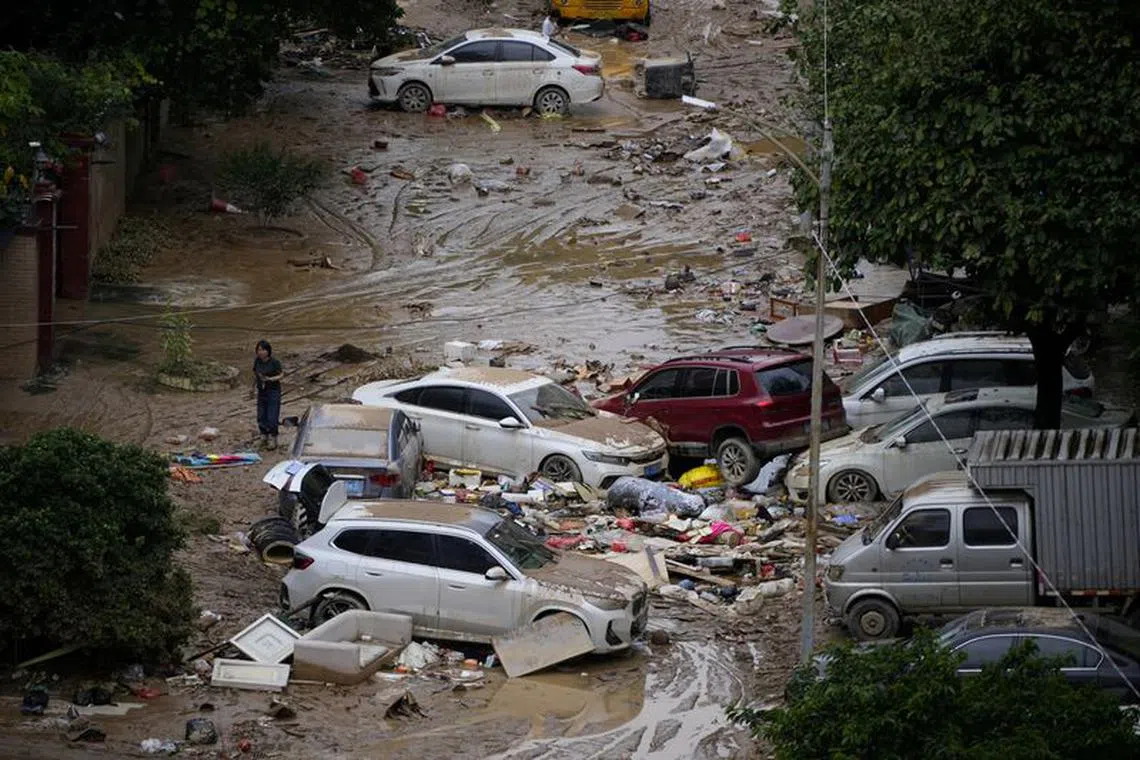Rains from dying typhoon batter China for seventh day
Sign up now: Get insights on Asia's fast-moving developments

Mud and debris plaguing the flooded town of Tangxia after heavy rainfall in Dongguan, Guangdong province, China, on Sept 9.
PHOTO: REUTERS
Follow topic:
BEIJING - Heavy rain from a typhoon kept southern China drenched
In the rural county of Bobai in Guangxi region, rescuers on assault boats have been scrambling to pull people to safety since Sunday night as water more than 2 metres deep stranded residents in low-rise homes, state media reported on Monday.
Heavy rain is expected to persist in Guangxi over the next few days.
Haikui has weakened from a typhoon to a tropical storm since making landfall in Fujian province on Sept 5,
Scientists warn that typhoons hitting China are becoming more intense and their paths growing more complex, escalating the risk of disaster, even in coastal cities such as Shenzhen that regularly brave tropical cyclones and already have strong flood defence capabilities.
“Typhoons that move far inland affect regions historically less exposed to heavy rainfall and strong wind, often with lower disaster resilience, leading to more severe losses,” said Dr Sun Shao, a climatologist at the University of California, Irvine.
He added that in the case of Shenzhen, the disaster had been mainly due to the slow westward movement of Haikui’s residual circulation from the afternoon of Sept 7 to the early hours of Sept 8. This, he explained, led to “a ‘train effect’ of heavy rainfall... causing the event to exceed its expected intensity”.
A “train effect” refers to the cumulative effect of multiple cloud systems passing over an area in succession, which sharply raises the potential for heavy or even extreme rainfall. REUTERS

